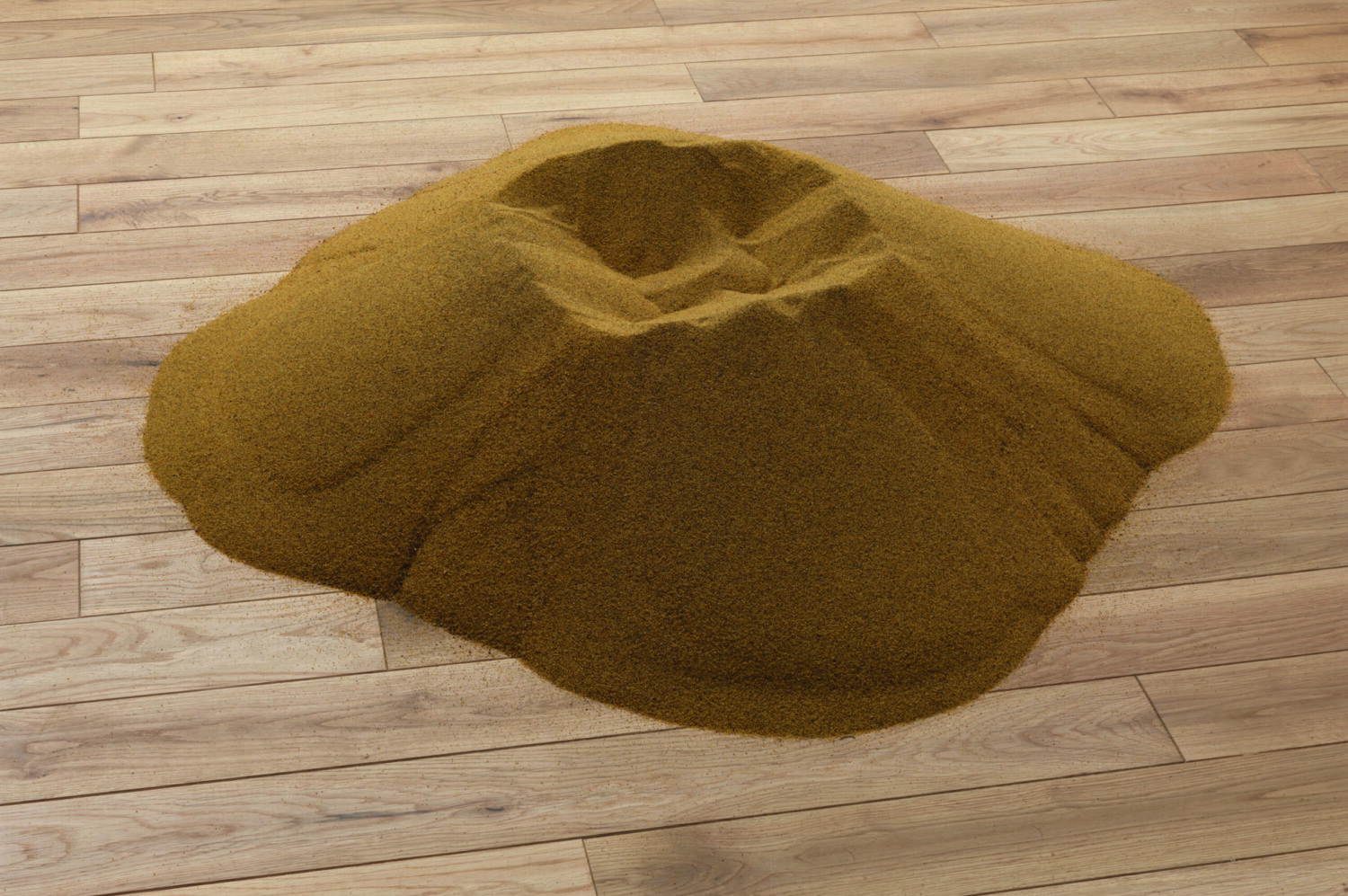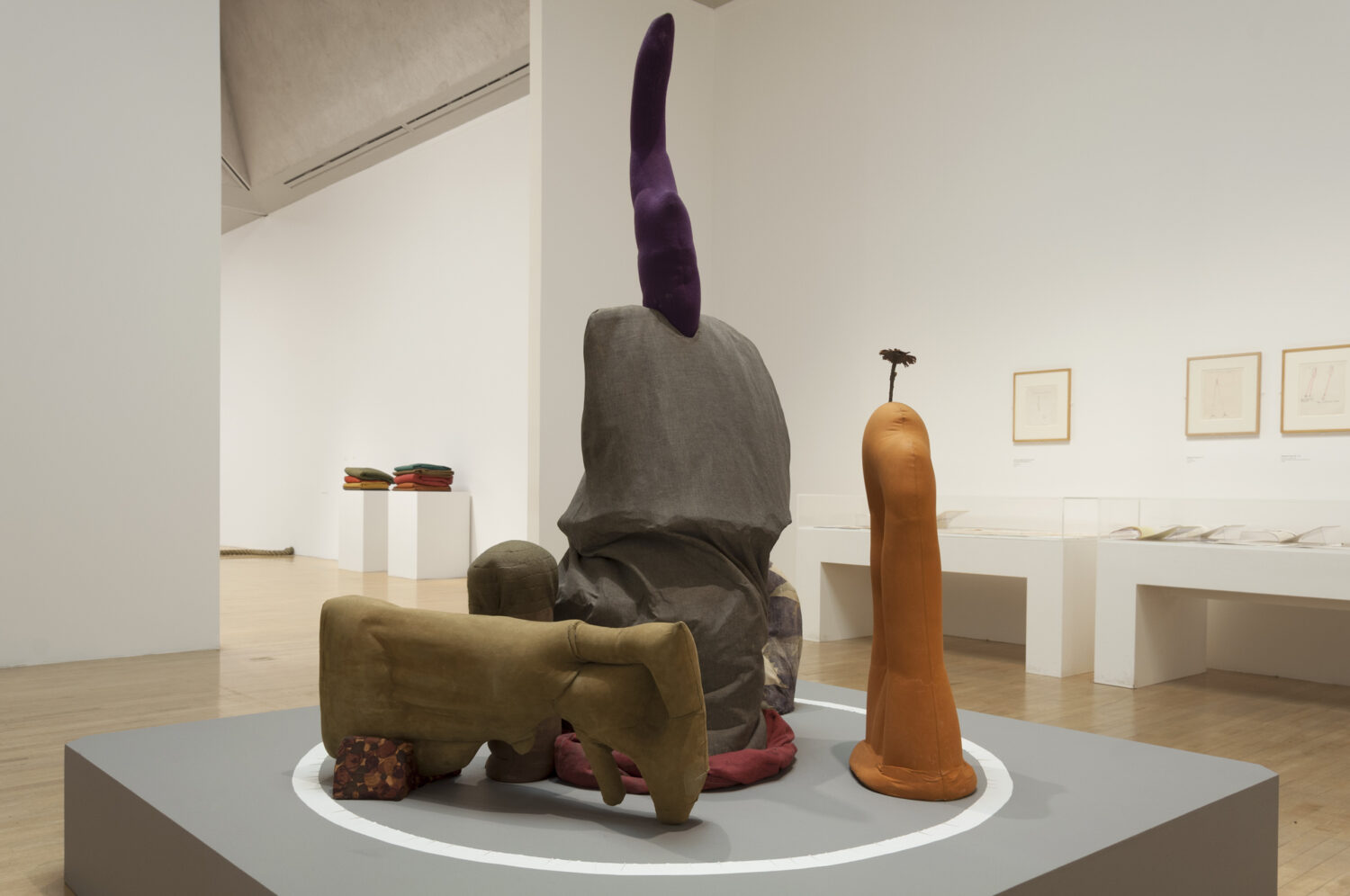
Please check our FAQs section if you unsure how to use the website or looking for something specific
Engagements with ‘The science of imaginary solutions’
Flanagan’s lifelong obsession with Alfred Jarry and his philosophy of ‘pataphysics began after he was given this copy of the Evergreen Review titled ‘What is ‘Pataphysics?’ by a poet friend Nick Wayte in 1961.
What absorbed Flanagan about ’pataphysics was how it presented the unquantifiable nature of existence and the juxtaposition of paradox and the absurd.
It fed his interest in concrete poetry and the way he titled his works. These have a linguistic sensibility and suggest diverse avenues for interpretation.

‘ringn ’66’ (1966) installation view Barry Flanagan: Early works 1965-1982 at Tate Britain, 27 Sep 2011 – 2 Jan 2012

‘aaing j gni aa’ (1965) installation view Barry Flanagan: Early works 1965-1982 at Tate Britain, 27 Sep 2011 – 2 Jan 2012
Made when Flanagan was a student, ‘N’existe pas’ (1964) is negatively emblazoned in paint along one of the edges of the constructed sculpture. Clearly the sculpture exists, but perhaps what is being considered is on what terms does it not exist.
‘Pataphysics, is properly denoted with the apostrophe before the letter p, as if to close a previous speech mark and therefore mark a metaphorical circularity, or to put it another way, an ending before a beginning. This circularity of intention is a primary characteristic of ‘pataphysical thinking and the spiral form is used frequently.
The destabilising of the psychological and emotional barriers between actor and audience in Alfred Jarry’s play Ubu Roi are crucial in understanding ‘pataphysics, whereby distinctions between internal feelings and interiority with external effects become blurred.
This is represented in the use of the spiral form, which denotes the dual possibility of presence and absence. The drawn spiral indicates two spirals, one is absent or negative, to the other’s positive presence. It denotes energy and can be found on the monstrous belly of Ubu.
More or less fifty years later, in an interesting case of happenstance, Flanagan who was good friends with Franciszka and Stefan Themerson, acquired the masks for the Themerson archive, whose trustees then gave them to the British Library
On 9 February 2007, Flanagan held a celebratory lunch at the Ivy restaurant on the occasion of gifting the newly restored masks to the Themerson Archive. Invited guests include many of the people Flanagan worked or collaborated with such as George Melly, Michael Kustow, Teresa Gleadowe, Charles Harrison, Angus Forbes, Leslie Waddington, Jasia Reichardt, Nick Wadley, Thieri Foulc, Alistair Brotchie and John Kasmin.
Flanagan’s use of the hare motif attracted the attention of the Collège de ’Pataphysique, and they wrote to ask if he could design a stamp because a hare stamp is used as a ’pataphysical award for those in advance of paying their phynance.
The suggestion was to make a silhouette of a leaping hare however Flanagan instead provided an image of a ‘frog hare’, a morphological transformation between reptile and mammal.
Set against a green background, a colour that has specific symbolic resonance for ‘pataphysics, the image of the ‘frog hare’ was used and Flanagan was appointed to the society, joining Dario Fo, Umberto Eco and Jean Baudrillard whose commemorative stamps were made for the society at the same time.